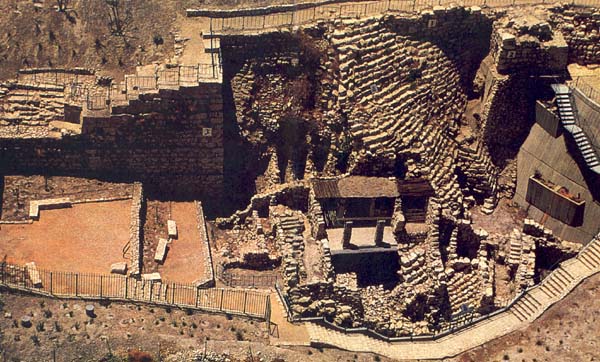Image Details

Raphael Magnes, courtesy City of David Archaeological Expedition
Placards (1), (2) and (3) mark walls and towers of the Hellenistic and Early Roman periods (second century B.C. to 70 A.D.); these fortifications are probably on the same line as Nehemiah’s fifth-century B.C. wall. The “House of Ahiel,” identifiable by its two pillars, is a seventh-century B.C. building so named because an inscription including the name Ahiel was found within.
The massive, 50-foot-high stepped-stone structure (4) was built by the Israelites in the early tenth century B.C. It added about 2,800 square feet of flat space on top of the hill for buildings. Before Shiloh excavated the City of David, the stepped-stone structure had been only partially exposed. Kathleen Kenyon, who excavated in the City of David from 1961 to 1967, dated it to no earlier than the sixth century B.C.
